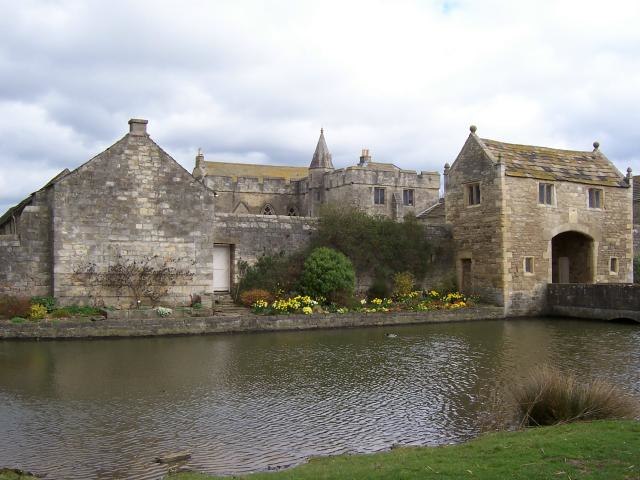A mansion is a large dwelling house. The word itself derives through Old French from the Latin word mansio "dwelling", an abstract noun derived from the verb manere "to dwell". The English word manse originally defined a property large enough for the parish priest to maintain himself, but a mansion is no longer self-sustaining in this way. Manor comes from the same root—territorial holdings granted to a lord who would "remain" there.
Gelbensande Manor, an 1885 Gründerzeit style mansion built for hunting, near Rostock, Germany
Renaissance villas such as Villa Rotonda near Vicenza were an inspiration for many later mansions, especially during the industrialisation.
Harlaxton Manor, England, a 19th-century meeting of Renaissance, Tudor and Gothic architecture produced Jacobethan – a popular form of historicist mansion architecture.
Built in Renaissance Revival style, The Breakers in Newport, Rhode Island, is one of the best known 19th-century mansions in the United States.
A manor house was historically the main residence of the lord of the manor. The house formed the administrative centre of a manor in the European feudal system; within its great hall were usually held the lord's manorial courts, communal meals with manorial tenants and great banquets. The term is today loosely applied to various English country houses, mostly at the smaller end of the spectrum, sometimes dating from the Late Middle Ages, which currently or formerly house the landed gentry.
The Abbey, Sutton Courtenay in Oxfordshire (previously Berkshire), considered to be a "textbook" example of the English medieval manor house
Markenfield Hall in North Yorkshire, a 14th-century manor house with moat and gatehouse
Ightham Mote, a 14th-century moated manor house in Kent, England
Leeds Manor House Blue Plaque, Scarborough Hotel








